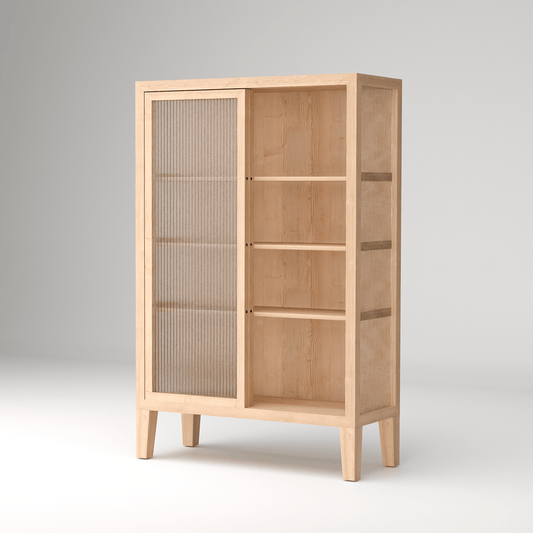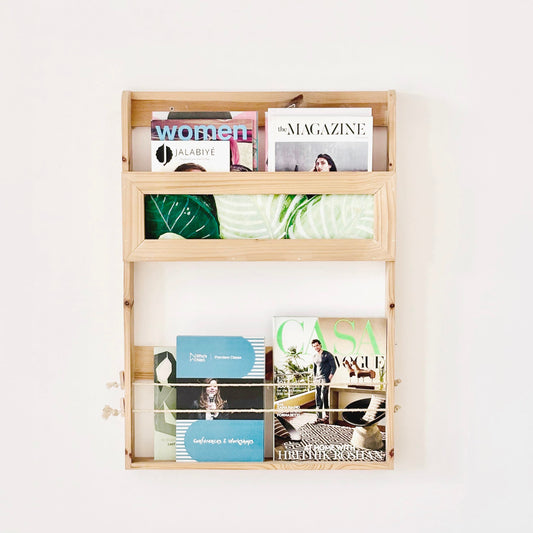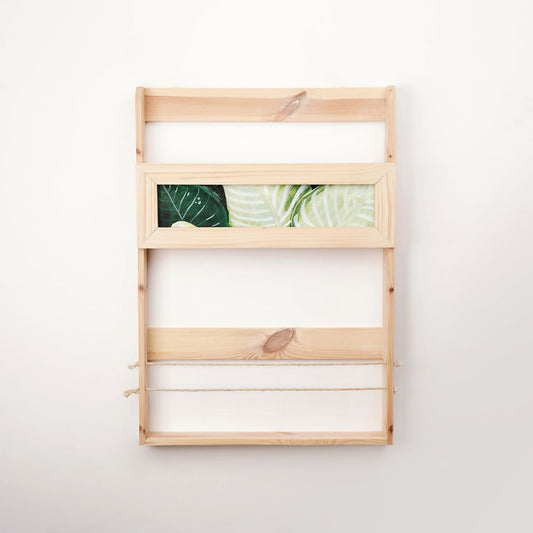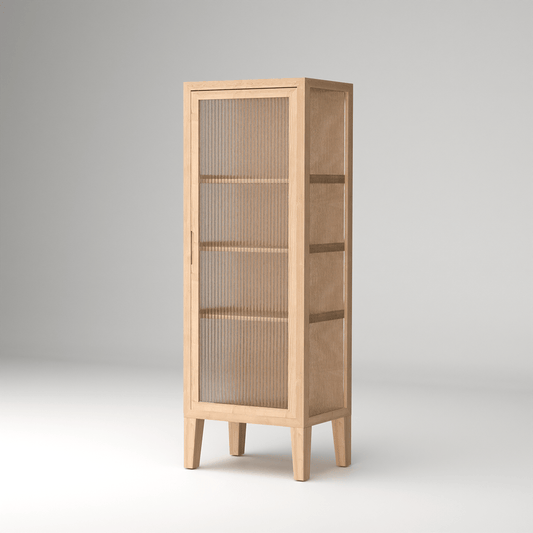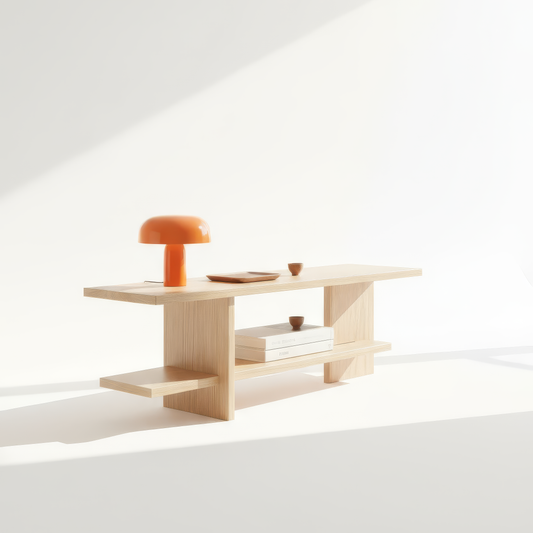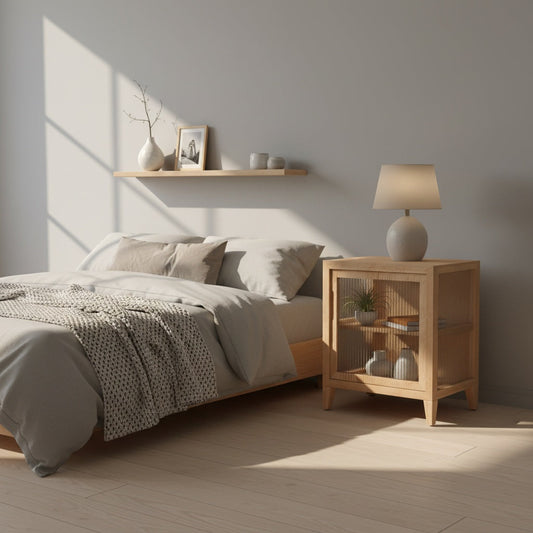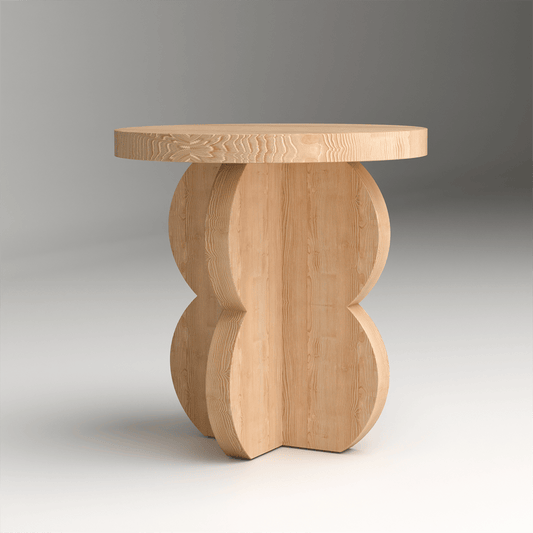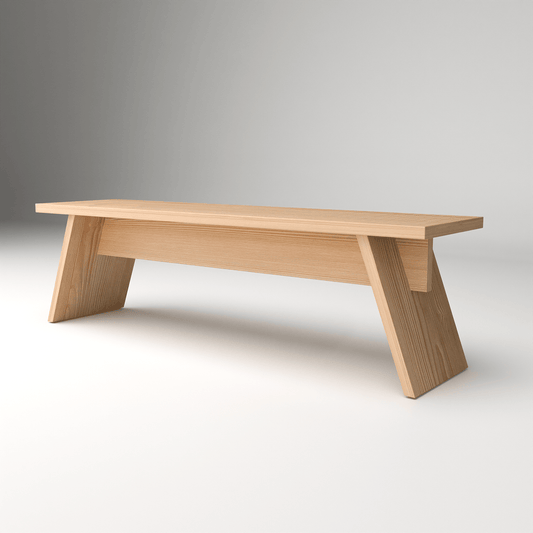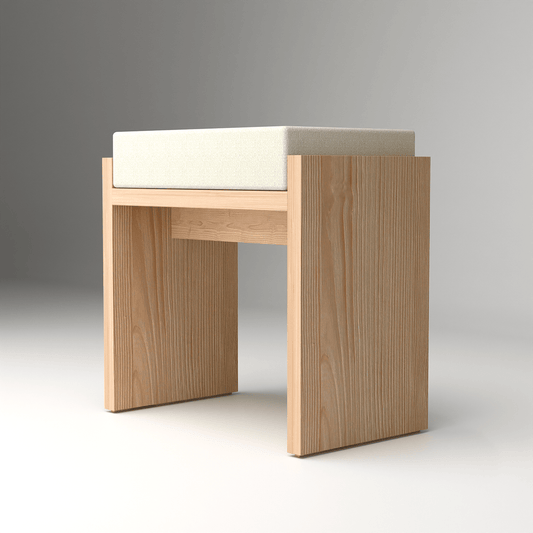Family life is a journey of constant change, from welcoming new members to watching children grow and mature, to adapting to evolving needs and lifestyle shifts. Furniture that can grow and adapt alongside these changes represents one of the most thoughtful investments a family can make, providing continuity, value, and functionality that spans decades rather than years.
At A Good Life, we understand that family furniture must be more than beautiful—it must be resilient, adaptable, and capable of serving different needs as families evolve. Our handcrafted pine wood furniture is designed with longevity and adaptability in mind, creating pieces that become part of your family's story while adapting to serve new chapters as they unfold.
Understanding Family Furniture Needs
Successful family furniture must address the unique challenges and opportunities that come with households where needs, preferences, and circumstances change regularly.
The Family Lifecycle Perspective
New Family Formation: Young couples establishing their first homes together, needing furniture that can adapt as relationships deepen and living situations stabilize.
Growing Families: Households welcoming children who require furniture that can accommodate new safety needs, storage requirements, and activity patterns.
Maturing Children: Families with children who are developing their own preferences, needs, and independence, requiring furniture that can adapt to changing uses.
Multi-Generational Living: Homes serving multiple generations simultaneously, needing furniture that works for different age groups and mobility levels.
Empty Nest Transitions: Families whose children have grown and moved away, requiring furniture that can adapt to new lifestyle priorities and space uses.
Adaptability Requirements
Safety Evolution: Furniture that can be modified to meet changing safety requirements as children grow from infants to teenagers.
Size Accommodation: Pieces that can adapt to serve users of different sizes and physical capabilities throughout family development.
Function Flexibility: Furniture that can serve different purposes as family activities and priorities change over time.
Aesthetic Growth: Pieces that can evolve aesthetically to remain relevant as family tastes and home décor preferences mature.
Economic Adaptation: Furniture that provides value across multiple life stages, reducing the need for frequent replacement.
Our Minimalist Wood Nightstand - HUSTLE Pinewood exemplifies adaptable family furniture, serving as a child's bedside table, teen storage solution, adult nightstand, or even living room accent piece as family needs evolve.
Child-Safe Adaptable Design
Creating furniture that can serve families with children requires special attention to safety features that don't compromise long-term functionality or aesthetic appeal.
Safety-First Design Principles
Rounded Edges: Furniture construction that eliminates sharp corners and edges that could cause injury during active play.
Stable Construction: Engineering that prevents tipping, wobbling, or collapse even when subjected to climbing or rough use.
Non-Toxic Materials: Using only natural materials and finishes that are safe for children who may touch, mouth, or interact closely with furniture.
Secure Hardware: Fasteners and mechanisms that cannot be easily loosened or removed by curious children.
Smooth Surfaces: Finishes that prevent splinters, rough spots, or other surface hazards that could cause injury.
Adaptable Safety Features
Removable Safety Elements: Components like corner guards or edge protection that can be removed as children mature.
Adjustable Heights: Furniture that can be modified to appropriate heights for different age groups and safety requirements.
Lockable Storage: Compartments that can be secured when needed for child safety and opened as children mature.
Tip-Prevention Options: Temporary anchoring systems that can be removed when no longer needed for safety.
Surface Protection: Temporary protective treatments that can be refreshed or removed as wear patterns change.
Growth-Accommodating Storage
Family storage needs change dramatically as children grow, requiring furniture that can adapt to different organizational requirements and user capabilities.
Evolving Storage Requirements
Toy-to-Book Transition: Storage that can accommodate large toys when children are young and transition to books, electronics, and personal items as they mature.
Clothing Adaptation: Storage systems that can handle different clothing sizes, types, and organization preferences as children grow.
Activity Evolution: Storage that can adapt from craft supplies and games to sports equipment, musical instruments, and hobby materials.
Privacy Development: Storage solutions that can provide increasing privacy and personal space as children develop independence.
Accessibility Changes: Storage that can be modified for different user heights and physical capabilities as children grow.
Modular Storage Solutions
Expandable Systems: Storage that can grow in capacity and complexity as family needs increase.
Reconfigurable Components: Modular pieces that can be rearranged to serve different functions and accommodate changing needs.
Height-Adjustable Elements: Storage components that can be repositioned to remain accessible and functional for growing children.
Convertible Compartments: Storage areas that can be subdivided or opened up based on changing organizational needs.
Multi-User Design: Storage systems that can accommodate multiple family members with different needs and preferences.
For adaptable storage that grows with families, consider our Nordic Fluted Glass Cabinet in Pinewood. This piece can serve as toy storage for young children, display space for collections as they grow, and sophisticated storage for adult belongings, adapting its function while maintaining its beautiful design.
Seating That Adapts to All Ages
Family seating must accommodate users of vastly different sizes, from toddlers to grandparents, while maintaining comfort and safety for all.
Multi-Generational Seating Design
Variable Height Options: Seating that can accommodate different leg lengths and sitting preferences across age groups.
Supportive Construction: Furniture that provides appropriate support for both developing spines and aging backs.
Easy Access: Seating heights and designs that allow easy sitting and standing for users with different mobility levels.
Durability Engineering: Construction that can handle the wear patterns of active children and the long-term use of adults.
Comfort Adaptability: Seating that can be modified with cushions or accessories to provide optimal comfort for different users.
Convertible Seating Solutions
Adjustable Heights: Seating that can be modified to appropriate heights for different family members and activities.
Modular Arrangements: Seating components that can be arranged for intimate family time or larger gatherings.
Multi-Purpose Function: Seating that can serve as chairs, benches, or even play surfaces depending on family needs.
Storage Integration: Seating that provides storage for family items while serving its primary seating function.
Easy Maintenance: Seating designed for easy cleaning and maintenance in active family environments.
Work and Study Adaptations
As families grow and change, furniture must adapt to serve different work and study needs from homework supervision to remote work requirements.
Educational Support Evolution
Height Adjustability: Work surfaces that can grow with children from early drawing activities to teenage study needs.
Storage Adaptation: Organization systems that can evolve from art supply storage to textbook and technology organization.
Lighting Integration: Work furniture that can accommodate different lighting needs for various age groups and activities.
Technology Evolution: Furniture that can adapt to changing technology needs from simple craft activities to complex digital work.
Supervision Accommodation: Work areas that can facilitate parental supervision when needed and provide privacy as children mature.
Multi-User Work Solutions
Shared Workspace Design: Furniture that can accommodate multiple family members working simultaneously.
Activity Separation: Work areas that can be configured for different types of activities happening concurrently.
Storage Sharing: Organization systems that can accommodate multiple users' materials while maintaining individual organization.
Flexibility Planning: Work furniture that can be reconfigured for different family work and study patterns.
Growth Accommodation: Work areas that can expand or contract based on changing family work and study needs.
Our Pinewood Ergonomic Work Desk demonstrates adaptable work furniture design, serving children's homework needs, teenage study requirements, and adult work-from-home demands while maintaining ergonomic support across different user sizes.
Entertainment and Social Adaptations
Family entertainment needs change significantly as children grow and family social patterns evolve, requiring furniture that can adapt to different activities and group sizes.
Activity Evolution Support
Play-to-Entertainment Transition: Furniture that can support active play when children are young and more sophisticated entertainment as they mature.
Group Size Flexibility: Seating and surface arrangements that can accommodate different numbers of family members and guests.
Technology Integration: Entertainment furniture that can evolve with changing technology and media consumption patterns.
Storage Adaptation: Organization for entertainment items that can evolve from toys and games to electronics and media collections.
Space Reconfiguration: Entertainment areas that can be quickly reconfigured for different activities and social situations.
Social Development Support
Conversation Facilitation: Furniture arrangements that encourage family interaction and communication across age groups.
Privacy Options: Entertainment areas that can provide both group activities and individual space as needed.
Guest Accommodation: Furniture that can quickly adapt to accommodate friends and extended family visits.
Activity Separation: Entertainment areas that can support multiple activities simultaneously without conflict.
Celebration Adaptation: Furniture that can be reconfigured for family celebrations and special occasions.
Aesthetic Evolution Considerations
Family furniture must be able to evolve aesthetically as tastes mature and home décor preferences change over time.
Timeless Design Principles
Classic Proportions: Furniture proportions that remain pleasing regardless of changing decorative trends.
Natural Materials: Materials like pine wood that age beautifully and complement various decorative styles.
Neutral Foundations: Base designs that can be accessorized and modified to reflect changing aesthetic preferences.
Quality Construction: Craftsmanship that becomes more appreciated over time rather than looking dated.
Refinishing Potential: Furniture that can be refinished or modified to reflect evolving family tastes.
Personalization Opportunities
Accessory Integration: Furniture designed to accommodate changing accessories and decorative elements.
Color Adaptability: Pieces that can be modified with different stains, paints, or treatments as preferences change.
Hardware Updates: Furniture that can be refreshed with updated hardware and accessories.
Functional Additions: Base pieces that can be enhanced with additional components as needs evolve.
Style Flexibility: Designs that can work within different decorative styles as family preferences mature.
Economic Benefits of Adaptable Family Furniture
Investing in furniture that grows with families provides significant economic advantages beyond the initial purchase price.
Long-Term Value Creation
Replacement Avoidance: Furniture that adapts rather than requiring replacement as family needs change.
Multi-Function Value: Pieces that serve multiple purposes provide greater value than single-function alternatives.
Durability Investment: Quality construction that withstands family use provides better cost-per-year value.
Resale Potential: Well-made adaptable furniture maintains value for potential future resale.
Inheritance Value: Furniture that can be passed down to future generations provides multi-generational value.
Budget-Friendly Adaptation Strategies
Phased Investment: Building adaptable furniture collections gradually over time as budget allows.
Modification Over Replacement: Adapting existing furniture rather than purchasing new pieces as needs change.
Quality Focus: Investing in fewer, higher-quality adaptable pieces rather than many single-purpose items.
DIY Adaptations: Making simple modifications to furniture to extend its useful life and functionality.
Community Resources: Sharing adaptation ideas and resources with other families facing similar challenges.
Maintenance and Care for Growing Families
Family furniture requires special maintenance considerations due to heavy use and the need to remain functional across different life stages.
Family-Friendly Maintenance
Easy Cleaning: Furniture finishes and designs that can be easily cleaned and maintained in active family environments.
Repair-Friendly Construction: Furniture built to be easily repaired rather than replaced when damage occurs.
Child-Safe Maintenance: Cleaning and care products that are safe to use around children and pets.
Preventive Care: Maintenance routines that prevent major damage and extend furniture life.
Professional Services: Establishing relationships with repair and refinishing services for major maintenance needs.
Adaptation Maintenance
Hardware Care: Maintaining adjustable mechanisms and hardware to ensure continued functionality.
Finish Protection: Protecting furniture finishes during heavy family use while maintaining their beauty.
Structural Integrity: Regular inspection and maintenance of structural elements that support adaptable functions.
Component Replacement: Planning for replacement of wear components in adaptable furniture systems.
Upgrade Integration: Incorporating improvements and upgrades as they become available or needed.
The Future of Family-Adaptable Furniture
Looking ahead, furniture designed to grow with families will likely become even more sophisticated and responsive to changing family dynamics.
Emerging Technologies
Smart Adaptation: Furniture that automatically adjusts to different users based on recognition and preference learning.
Health Integration: Adaptable furniture that promotes physical development and health across different age groups.
Educational Integration: Furniture that incorporates learning and development features that evolve with children.
Safety Innovation: Advanced safety features that can be activated or deactivated based on family needs.
Sustainability Enhancement: Adaptable furniture designed for even greater longevity and environmental benefit.
Innovation Directions
Biometric Adaptation: Furniture that automatically adjusts to individual family members based on physical characteristics.
Predictive Functionality: Furniture that anticipates family needs based on usage patterns and life stage indicators.
Community Integration: Adaptable furniture designed to support extended family and community connections.
Circular Design: Family furniture designed for complete adaptability and eventual recyclability.
Cultural Integration: Adaptable designs that can accommodate different cultural practices and family traditions.
Furniture that grows with your family represents one of the most thoughtful investments you can make in your home, providing continuity, value, and functionality that spans decades of family life. By choosing adaptable pieces that can evolve alongside your family's changing needs, you create a home environment that supports growth, development, and connection across all life stages.
The key to successful family-adaptable furniture lies in understanding that families are dynamic entities that require flexible solutions. When furniture can adapt to serve different needs, ages, and circumstances, it becomes an integral part of the family story rather than just functional objects.
As families continue to evolve and change, adaptable furniture will play an increasingly important role in creating homes that truly support family life in all its complexity and beauty, providing the stability and flexibility that growing families need to thrive.


